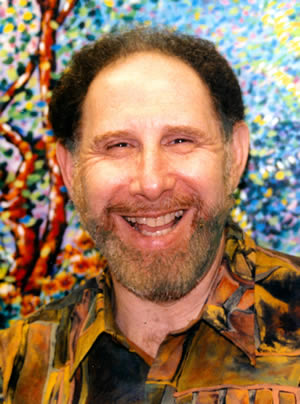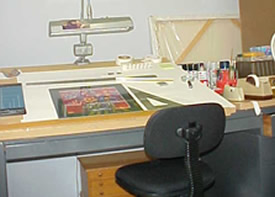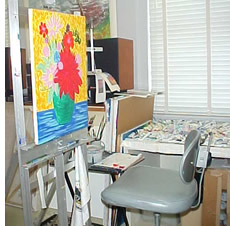The Artist as Entrepreneur |
Max
R. Scharf
|
After two years at Washington University School of Fine Art in St. Louis, Scharf went on to receive some very useful training in the U.S. Army during the Korean War. He attended Engineering Drafting School at Ft. Belvoir, VA, and then worked in a field printing plant as an artist, film stripper, and plate-maker. That training served him well as a technical illustrator for an aircraft company and later as an art director for Vi-Tronic, Inc. Combining his artistic, technical, and business skills, Scharf started his own promotional products business in 1963. His experience in the corporate world took him all over the world, and while he was associated with D'Arcy Advertising, he worked with famous clients like Anheuser-Busch and Cadillac. An unfortunate financial turn of events forced Scharf to close down his business in 1990. He had never abandoned his fine arts passion. Over the years, he traveled widely and took pictures wherever he visited. He had also continued to paint whenever he had the time to devote to it. His semi-retirement from business in 1990 became an opportunity to pursue his painting. Scharf threw himself into the business side of his art with all the knowledge and experience he had gained over the almost forty years in the corporate world. His expertise and perseverance have made him successful at his passion: painting. Scharf grew up in North St. Louis and has been married to his wife Esther, a fellow St. Louisan, for 40 years. When they were first married, she taught school. In 1990, when their fortunes were in flux, she returned to school and has become a licensed clincal social worker. They have two grown sons. The following interview with Max R. Scharf was conducted by Cheryl Blake, UM-St. Louis, August 2004. Q. What has brought you to this point in your artistic career?
People think you either have talent as an artist or you don't. That is a misconception, you can be taught to be a good artist. Once I realized that in Quest's class, I felt good about myself. My perseverance is there [in my art]; I keep at it. Q. When did you begin to sell your paintings?
As time went on I realized how tough it was going to be to succeed in the art world. To have a chance to succeed you need to constantly promote yourself. I won my first competition I ever entered, the 1992 Saint Louis Art Museum Holiday Card competition. Shortly after that I got a prestigious exhibit in 1993 sponsored by the National Park Service in the rotunda of the Old Courthouse in downtown St. Louis. People asked me how I got the exhibition, and I told them I asked for it. I called and found out whom to talk to at the National Park Service. I presented my idea, "Impressions of National Parks and St. Louis," and they gave me a two-month show. The paintings were not for sale there, but it was an impressive exhibition that was good for my credibility.
[Scharf has spoken to students at William Woods University and Fontbonne University and has had students come to his studio for help and advice. The lecture to which he refers includes how to prepare the portfolio, personal appearance, representation, and other equally important components of fine arts and business.] Visit Max's Art Commerce website and Art Exhibition website to see how successful artists bring attention to their work. copyright 2004, Center for Entrepreneurship and Economic Education, University of Missouri-St. Louis
|




